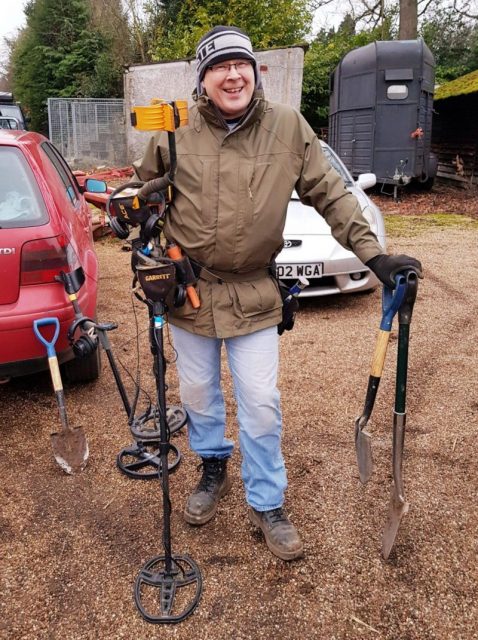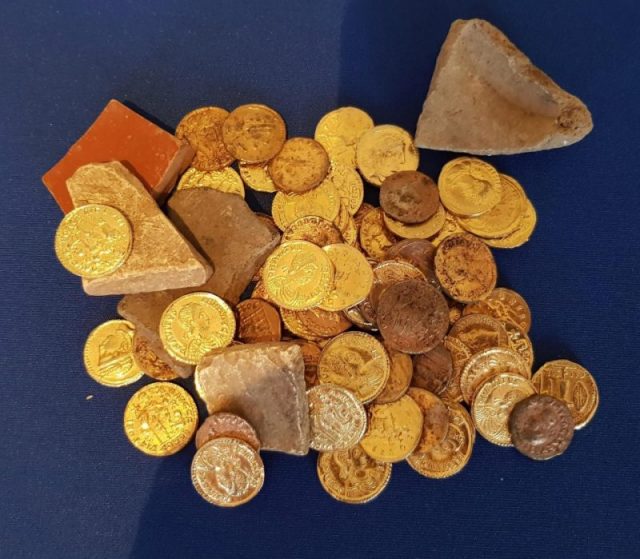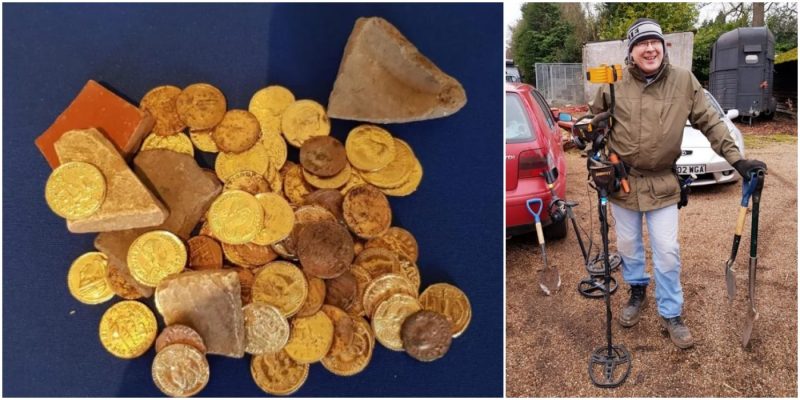For just over 24 hours, two middle-aged friends with a metal detector thought they had literally hit paydirt in a ploughed field in Suffolk, only to have their dreams of riches ruined by reality–and in a painful twist, it was a television series featuring two fictional men with a metal detector that turned their ecstasy into embarrassment.
Paul Adams and Andy Sampson, who work together delivering oxygen to medical patients, took up searching for treasure with a metal-detector as a hobby about a year ago. They were making their way through the field in question when Adams uncovered a gold coin. He called for Sampson, and the two of them found another coin, then another. Shouting, “Roman gold! Roman gold!” the friends gathered 54 coins in total.
“We sat there in total disbelief,” Sampson said in an interview.
The men identified six Emperor Nero coins and, calculating they were worth about close to $40,000 each, it seemed clear that the friends were about to be rich. “I was paying off my mortgage and buying a sports car in my head,” said Sampson. “We thought we were looking at the real McCoy.” The two of them began dancing in the field.

The next day, they showed their stash to a friend who had been venturing forth with a metal detector for 40 years and is a member of the Suffolk Archaeological Survey, and he was forced to break the bad news: The coins did not look like genuine Roman currency. Soon after that, Adams and Sampson learned that the TV comedy Detectorists had used the Suffolk field a year ago as a location for one of its episodes. Detectorists is a BBC 4 comedy series about two friends, played by Mackenzie Crook and Toby Jones, who have a common dream: finding a priceless collection of items that would “cement their place in detecting history.”
Sure enough, a call to the production company yielded the new that the TV crew had buried fake gold coins in the Suffolk field a year earlier. In the episode, the coins were buried in a clay Roman pot and then brought to the surface by a tractor 2,000 years later. The Detectorists crew thought that all the props for the show had been collected at the end of the location shoot, but they clearly missed some.
Sampson said, “I think we are officially the world’s unluckiest metal detectorists. Our story would make a TV series of its own.”
The two men did not go completely “from Nero to Zero,” as The Sun headline put it. The pals’ hoard of prop coins is worth about $300.
“I was gutted,” Detectorists writer and star Crook said when he heard the friends’ story. “I hope they continue searching and I hope they find their real gold soon.”
What could make the mistaken discovery truly bittersweet is that a genuine find of a lifetime was made in a farmer’s field in Yorkshire by a man with a metal detector in 2014. Hobbyist David Blakey found coins dated to the year 370 A.D., when several co-emperors of Rome were fighting for power. It was the largest collection of coins ever found in the UK, and it is now on exhibit at Yorkshire Museum.

The Roman occupation of Britain lasted from 43 to 410 A.D. About 20 Roman towns were built, with local gentry doing most of the work of running things for their Roman masters, including collecting taxes. The Romans were known for their uniform currency. Gold and silver coins were issued by the emperor, with brass coins issued by the Senate.
The mint at Rome was the main source of currency until the end of the 2nd century A.D., when provincial mints were created. The British mints were at London and Colchester.
